Agricultural Products Lists
-
Field Management techniques of Dryland Wheat in Spring
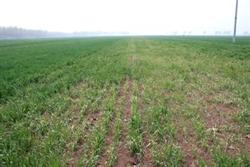
First, the cause of wheat seedling death in winter and spring 1. Internal cause refers to the ability of wheat plants to withstand cold and drought. Varieties with poor cold resistance are easy to cause dead seedlings. Individual sowing early, pre-winter ear differentiation to two-ridge stage of wheat seedlings, cold tolerance weakened, freezing injury often seriously killed seedlings, some late weak seedlings, their own accumulation.
2018-09-10 -
Analysis of current Wheat Seedling situation and suggestions on Spring Management
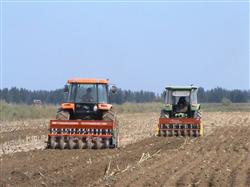
The key to a bumper grain harvest is to improve the quality of sowing with seven-minute planting and three-part management. At present, spring wheat in our province is about to enter the sowing period, how to make a good sowing pass and improve the sowing quality is related to the overall situation of spring wheat harvest throughout the year. First, the selection of improved varieties to win high wheat yield, soil is the foundation, fertilizer is nutrition, water is the lifeline.
2018-09-10 -
The control of wheat diseases, insect pests and weeds in spring is the key.
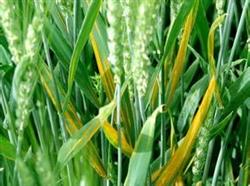
If the disease center is found in the field, spray control should be carried out in time. If the rate of diseased leaves reaches 5% and the severity is less than 10%, use 15% vermicelli wettable powder 50 grams or 20% strychnine EC 40 milliliters per mu, or 25% vermicelli wettable powder 30 grams per mu, or 12.5% Supra wettable powder 15 grams per mu.
2018-09-10 -
Beware of wheat sheath blight in spring
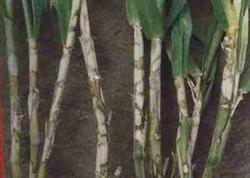
Wheat sheath blight is a kind of fungal disease which is mainly transmitted by soil. With the improvement of the level of yield, the harm of the popularization of high-yield varieties and the management of wheat field with large water and fertilizer is becoming more and more serious. After wheat sowing, if the germ is infected during germination, the coleoptile becomes brown, it will rot and die; the diseased plant will be clear after jointing.
2018-09-10 -
Lodging control measures of wheat in spring
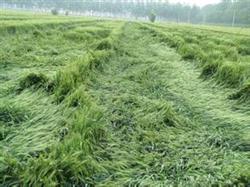
Lodging is one of the main factors affecting high and stable yield and good quality of wheat. Lodging mainly occurred in high yield wheat fields with abundant fertilizer and water, vigorous wheat growth, large population and heavy field cover. Early spring is the key period to prevent lodging of wheat. The comprehensive lodging prevention technical measures are: scientific operation of fertilizer and water...
2018-09-10 -
Factors affecting Maize yield

Factors affecting Maize yield
2018-09-10 -
Remedial measures for Spring Frost of Wheat
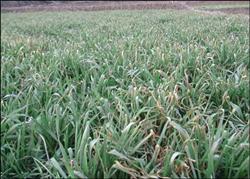
In February and March of every spring, cold air often breaks out to the south in the north, and the process of cooling is large, and the wheat jointing prematurely often suffers from freezing injury. At this time, for overgrown seedlings, repressive measures should be taken to restrain growth; the weak seedlings should be reasonably fertilized and turned strong to enhance their cold resistance, and at the same time, attention should be paid to listening to the sky.
2018-09-10 -
Wheat catch four defenses in spring
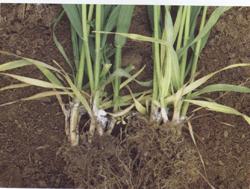
1. Occurrence and harm of wheat sheath blight wheat sheath blight is a kind of fungal disease mainly transmitted by soil. With the improvement of the level of yield, the harm of the popularization of high-yield varieties and the management of wheat fields with heavy water and fertilizer is becoming more and more serious. The host range of wheat sheath blight is wide, in addition to infecting wheat, but also.
2018-09-10 -
Occurrence and control of wheat sheath blight in spring
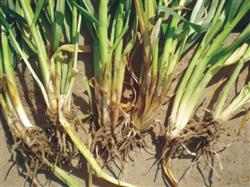
Wheat sheath blight is a kind of fungal disease which is mainly transmitted by soil. With the improvement of the level of yield, the harm of the popularization of high-yield varieties and the management of wheat fields with heavy water and fertilizer is becoming more and more serious. Rhizoctonia solani can infect not only wheat, but also corn, rice, millet, sorghum and so on.
2018-09-10 -
Guidance on fertilization Management of Wheat in Spring
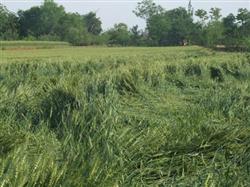
1) spraying paclobutrazol. Spraying 30kg 200ppm paclobutrazol solution per mu could dwarf the plant, enhance its lodging resistance, cure wheat powdery mildew and improve the absorption and utilization of nitrogen. (2) spraying chlorpheniramine. For large and prosperous wheat fields, spray 0 mu at the early stage of jointing.
2018-09-10 -
Cotton sowing techniques in spring
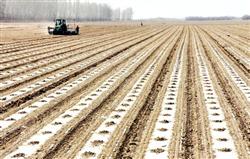
According to the variety, soil fertility and planting mode to determine the density, reasonable close planting, to achieve one sowing the whole seedling. General single planting spring cotton varieties, the first mu density is about 3500 plants, row spacing 1 meter, plant spacing 19 cm; semi-spring varieties generally control about 4500 plants per mu, row spacing, plant spacing 15 cm; summer cotton varieties,.
2018-09-10 -
When is the best time to accelerate the ripening of late cotton?
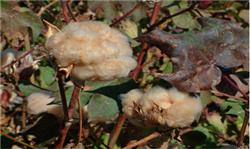
In recent years, we have tried to grow cotton with light brown, dark brown, green and other colors. The results show that in order to obtain better color effect and high yield, we should grasp the following five keys in cultivation. First, suitable early sowing and early transplanting according to the growth habits of colored cotton, should be appropriate early sowing, we should be at the end of March.
2018-09-10 -
How to fertilize cotton at flowering and boll stage

Friends of cotton farmers should earnestly strengthen the management of cotton fields after rain, prevent premature senility, prevent rotten bolls, prevent diseases and insect pests, and promote the normal growth of cotton bolls. Focus on the following measures: first, early drainage and lodging in August and September is the cotton boll opening period, in view of this year's Rain Water more climatic characteristics, for cotton fields with stagnant water, rain.
2018-09-10 -
Foliar topdressing of cotton is necessary in the later stage.
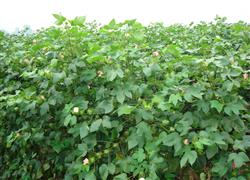
This weather phenomenon of drought before and rain after transplanting is very disadvantageous to the survival and growth of cotton after transplanting, and the growth process is about 10 days later than usual. In order to improve the rate of flower bud formation and boll formation in the later stage of cotton, it is suggested that the majority of cotton farmers should strengthen the management of fertilizer application in the later stage by foliar spraying.
2018-09-10 -
Deep-buried drip Irrigation Technology of Cotton
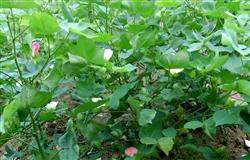
In order to sow the whole seedling, strong seedling and early development of cotton, and to achieve high yield and high benefit, it is necessary to grasp the following key techniques: 1. Select varieties with high yield and disease resistance. The main varieties of large-scale demonstration planting in our county are Jiza 1, Ji 2000, Ji 228, Hengmian 4 and so on. 2. Scientific and balanced fertilization. It is necessary to master the combination of organic fertilizer and chemical fertilizer.
2018-09-10 -
Technical guidance of Cotton production in Spring in the Cotton area of the Yellow River Basin
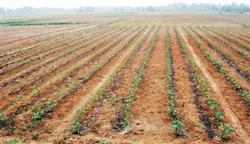
Seedling transplanting is light and simple. First, choose a good breeding base. It requires high-rise terrain, leeward to the sun, water and convenient transportation. Second, prepare the materials. The seedling bed was made by using seedling substrate and clean river sand or loaded into a hole plate instead of a nutrition bowl, and the sufficient materials were prepared according to 500 seedlings per square meter seedling bed. Third, timely.
2018-09-10 -
Do a good job of cotton late ripening and improve cotton quality and benefit
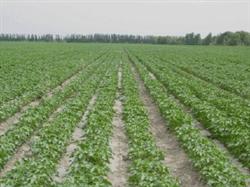
The fundamental measures to prevent premature senescence of cotton should start with strengthening the basic construction of cotton field, that is, deep ploughing and fine harrowing of cotton field, increasing application of organic fertilizer and keeping balance of various elements in soil. When cotton enters the late stage of growth, only the following remedial measures can be taken: First, fertilizer and water management should be based on cotton plant conditions.
2018-09-10 -
How to improve the emergence rate and seedling preservation rate of cotton in spring
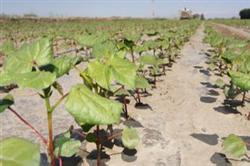
The main reasons for the low emergence rate and low seedling preservation rate of cotton are the poor quality of soil preparation: uneven land, uneven soil moisture and thick dry soil layer in some places, which can not produce the whole seedling after sowing. Long-term plastic film cotton planting: resulting in too much residual film on the surface of the soil, causing some seeds to be sowed directly on the plastic film in the soil.
2018-09-10 -
Key points of Cotton Field Management
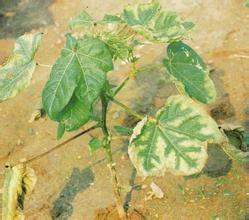
Water and fertilizer are the two most active factors in cotton production measures, and the regulation, promotion and control of water and fertilizer play a very important role in determining cotton yield. But some cotton farmers are impractical, in order to pursue higher cotton yield and higher cotton planting efficiency, blindly irrigate and fertilize, resulting in cotton yield decline, and even some cotton field water.
2018-09-10 -
Application of microbial Fertilizer to Cotton can prevent Disease
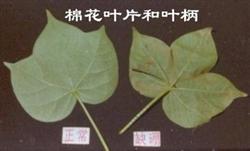
The symptoms of boron deficiency can appear after the emergence of boron-deficient cotton seedlings, such as thickening and darkening of cotyledons, easy folding of young buds, wilting and drooping in the shape of "GE" (normal leaves on the top of the leaves, showing a "Y" shape); the development of terminal buds stagnated and did not produce true leaves in serious cases, resulting in the death of seedlings. Lack of boron at seedling stage, due to terminal bud growth.
2018-09-10
